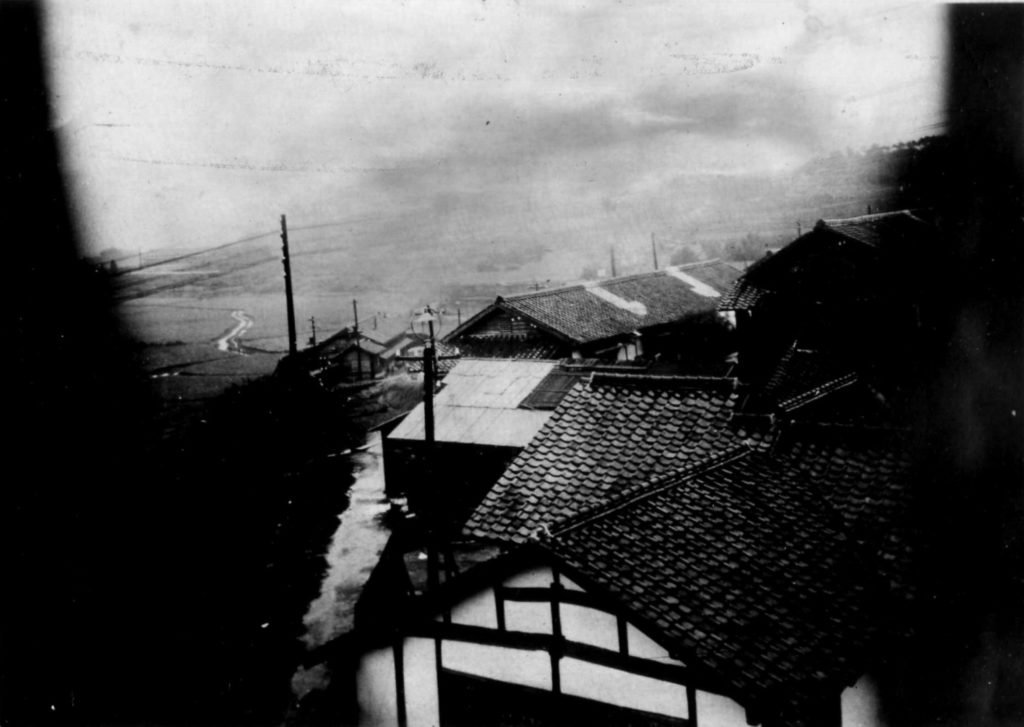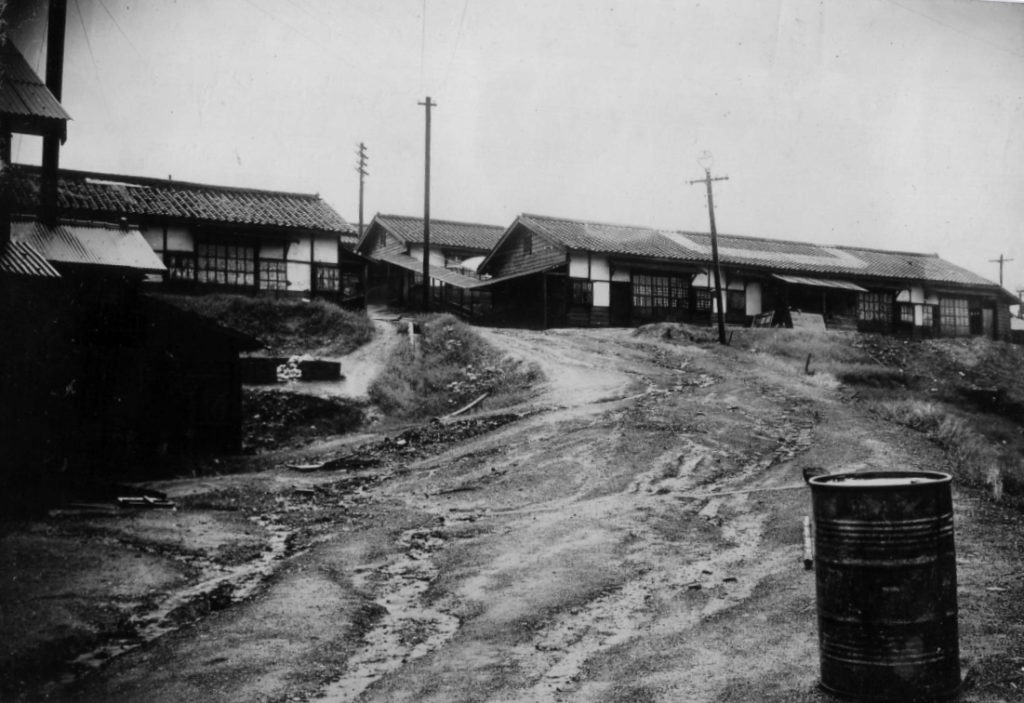Miyata, Fukuoka #9-B - Japan
Miyata, Fukuoka #9-B – Japan
Kajima Tanko (Mining Company Link)
Also Onoura Tanko
Established Wakinhoma as Fukuoka No. 20 Branch Camp at Onoura Coal Mine in Miyata-cho, Kurate-gun, Fukuoka Prefecture on December 4, 1943.
Renamed as Fukuoka No.12 Dispatched Camp on April 10, 1944.
Renamed as Fukuoka No.9 Branch Camp in August 1945.
The POWs were used by Kaijima-onoura Coal Mining Company.
792 POWs (495 Dutch, 243 British, 43 American and 11 Australians) were imprisoned at the end of the war.
47 POWs died during imprisonment.
The camp was situated in the hills about 10 miles to the northeast of Fukuoka City and consisted of twenty single-story wooden huts with tied roofs, former barracks of civilian mine workers. At some stage ‘Mick’ Wilkins was moved from Fukuoka Camp #17 to Fukuoka Camp #9 – Miyata where he remained until Japan’s surrender.
We wish acknowledge www.mansell.com for the use of the photographs below. We remain most grateful.
Australian POWs arrived on Aramis– renamed the Teia Maru was the French liner that carried the men arriving on 18 June 1944, ex Burma-Thailand Railroad. ARAMIS (MARU). On June 18, 1944 the Aramis arrived in Japan (Moji): 300 POWs went to Fukuoka 6 (ORIO), 100 (all Dutch) to Fukuoka 9 (MYATA), 250 (included 150 Aussies) to Fukuoka 17 (Omuta) and 350 to Fukuoka 21 (Nakama).

Above: view from guard tower (Sept 1945)

Above: Barracks (photograph taken Sept 1945
The following has been copied from the diary of British POW Capt. Andrew Atholl DUNCAN Argyll & Sutherland Highlanders.
“Our new camp at Miyata was termed a work camp – and was very aptly named – for the other ranks were required to work down coalmines, while the officers were forced to work on agricultural projects ranging from clearing land and constructing padi fields to planting rice and vegetables.
We left camp at 6.30 a.m. and did not return till 6p.m. and although we received a slightly increased ration of rice to that which was issued to us at Zentsuji, we were far worse off due to the heavy manual labour. The rules and regulations at this camp were very strict and woe betide anyone who stepped out of line, for savage beatings and torture were applied on the slightest provocation. Daily, we saw Allied aircraft passing overhead and on one occasion two Mustang fighters hedge-hopped over us about 50 feet up while the bombers that they were escorting sailed overhead completely unmolested.
On August 9th, while out working we heard the sirens sounding and not long after heard a long, drawn-out rumble. We looked at each other and smiled discreetly thinking that some nearby target had caught a packet. It had! However, it was not nearby, but about 60 miles away as the crow flies, for that rumble was the death knell of Nagasaki – the explosion of the 2nd Atomic bomb.
That evening, the Japs were obviously very perturbed about something and, to ease their pent-up feelings, decided to take it out of the British officers. We were lined up on the parade ground after evening roll call in two files, given a haranguing by the Jap duty N.C.O. – a sadistic swine by the name of Kurihara – who ended up by telling us about the British misdeeds in India and that he was going to show us what a Jap N.C.O. could do to British officers.
For the next forty minutes we had to stand at attention with our arms stretched above our heads while guards, armed with 2” x 4” timbers prowled up and down the files, viciously beating anyone who moved.
At the end of that time, we were ordered to assume the prone position and the real beating commenced. Every prisoner present was savagely beaten by 2” x 4” timbers, swung as hard as the guards could do it, the end of the spine and the kidney region being the favourite target areas. If anyone passed out a bucket of water was thrown over him to bring him round and the beating restarted.
Due to malnutrition, all of us had hardly any covering over our bones, so that it was small wonder that it was days before we could bear to touch the afflicted regions.”

